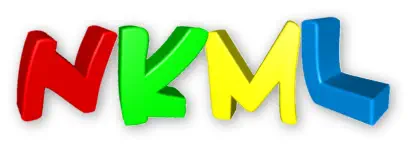‘Reading Music - An Introduction to Pitch’ has been written,
developed and refined over the last ten years or so as a consequence
of my observations whilst teaching my pupils, the challenges they
have when learning to recognise and remember the position of notes
on the stave and the correlation of that visual information to the
keyboard.
I saw that it was very difficult for them to make sense of what they
were seeing, they obviously just saw a mass of horizontal lines with
other strange symbols scattered around in much the same way as an
English reader / speaker would see when looking at say Arabic or
Japanese.
They couldn’t recognise the different lines and spaces on the stave
and therefore couldn’t identify the position of the notes on the stave,
they couldn’t recognise the musical pitch shapes that were made in a
short passage of notes, sometimes they couldn’t even see when a note
had already been played in a bar and the same note just needed to
played again.
The vital connections, concepts and correlation between the score and
the keys on the keyboard were not being formed easily.
Without the above being developed we and our pupils are left hoping
that somehow these concepts and connections will ‘magically’ drop
into place, often this can happen after a few years of struggling
through many pieces but often this doesn’t happen and the pupils will
give up because they find learning too difficult and frustrating. We as
teachers frequently encounter pupils who are working at the higher
level grades but still can’t sight read with any fluency or accuracy. The
groundwork for these skills needs to set at the start of learning.
’Reading Music - An Introduction to Pitch Notation’ remedies all of
this. I know it works because I’ve been using it in my lessons. After
using it pupils will be able to sight read more fluently, recognise
musical pitch shapes and understand more fully what they are
playing. This makes remembering pieces much more easy and also
lays the foundations for future aural skills as it develops the mental
visual skills needed for remembering melodies and harmonies.
Because it makes reading much easier pupils can make much faster
progress, have more satisfaction and sense of accomplishment. The
frustration is removed, they are more keen to practise and they are
less likely to give up lessons and learning the instrument.
Concepts are explained and illustrated using large colourful diagrams
followed by exercises to reinforce what has been learnt and a
summary of the key points covered.
Points and exercises are assisted by using colour scales and
associations, hints and prompts which gradually fade away, reducing
the pupil’s reliance on them as they move through the exercise.
The book is not intended to be a full manual on reading pitch notation,
for example it doesn’t cover sharps and flats or chords, it is just
intended to address those particular concepts that need to be instiled
and understood at the start of learning, and are vital so that good
progress can be made through whatever usual methods the teacher
uses.
Although it is primarily intended for use by keyboard players it can be
used by students of all instruments. After all, the easiest way to view
the pitch order of notes is to look at a keyboard even if you are
learning the trumpet!
The book works particularly well on tablets, the pages can be turned
quickly with a swipe or tap in exercises such as naming the notes. The
drawing sections can be done with annotation tools and there are
hints that can easily be zoomed up and down with finger pinching. I
often put it on the piano stand and turn the pages for my pupils with
my Bluetooth keyboard or pedal.
Some concepts are simplified and this is deliberate. For example when
counting how many notes there are between two notes the black
notes are not counted and the answer is at odds with interval naming.
Also it is stated that treble clef notes are played by the right hand and
the bass clef by the left hand, again not strictly true, but as a general
rule for a beginner it’s good enough. It is important when beginning to
learn music theory that concepts are kept simple.
The book is intended to be used alongside and is complementary to a
usual programme or method of study. I generally look at it for the first
or last five or ten minutes of a lesson. You may need to keep repeating
a particular section for a few weeks, especially the sections
containing exercises such as the note reading tests.
Have fun with ‘Reading Music An Introduction - An Introduction To
Pitch Notation’!
North Kent Music Lessons








